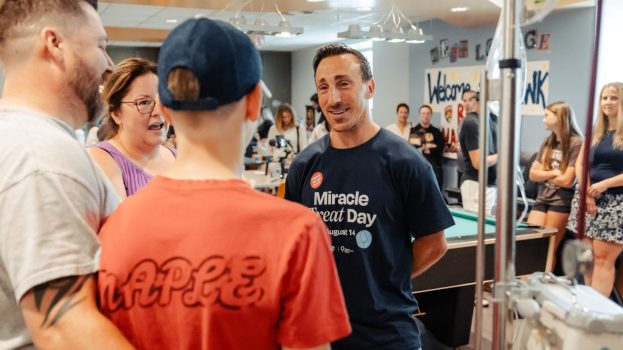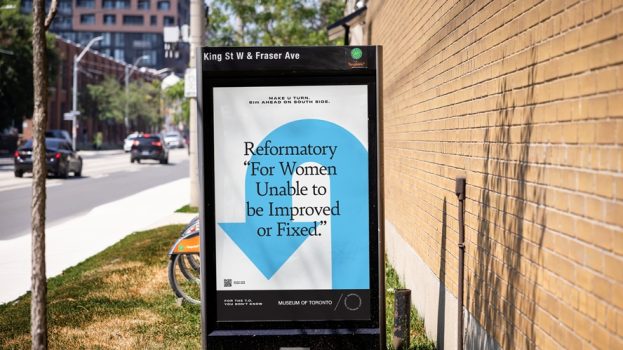 What if reducing the number of concussions in hockey didn’t depend on making stronger helmets but on designing them to better reflect the person’s head inside of it?
What if reducing the number of concussions in hockey didn’t depend on making stronger helmets but on designing them to better reflect the person’s head inside of it?
It’s an idea Ogilvy Toronto recently tested out at a youth hockey game with a female player, introducing a modified helmet with a vinyl overlay that matched what her head looks like beneath the hard shell (hair, ears and all).
They are calling it the world’s first concussion-proof helmet, and the activation launched in April is the centrepiece of a larger hockey safety campaign with the North York Hockey League. Posters demonstrating the idea with the message “Don’t forget, there’s a head inside,” have been in select North York Hockey League arenas since April, with a major push expected when the league restarts activity in September.
“We thought we could really do something with this and turn it into something that changes the way kids see each other on the ice,” says Ogilvy Toronto’s group creative director Jamie Marcovitch. “Banning checking altogether is not a reality for most leagues, so our goal was to inspire a change in how kids play the game.”
The campaign is needed for youths who may feel they can avoid injury with their equipment, particularly helmets, says Paul Maich, COO of the North York Hockey League, where checking has been banned since 2011. Concussions have doubled in the past 10 years in youth hockey, the poster states.
Marcovitch says he sees the recklessness first-hand at games – his two sons, ages four and six, both play.
“They are right at the heart of the age where kids are starting to play like they don’t care about each other on the ice,” he says.
 To help spread the message and bring the posters to life, the agency connected with 16-year-old Cassidy Atkinson (pictured, left), a member of the Toronto Aeros in the Lower Lakes Female Hockey League. Atkinson, who played on the same team as the daughter of senior partner Jody Low-A-Chee, had previously suffered multiple concussions playing hockey.
To help spread the message and bring the posters to life, the agency connected with 16-year-old Cassidy Atkinson (pictured, left), a member of the Toronto Aeros in the Lower Lakes Female Hockey League. Atkinson, who played on the same team as the daughter of senior partner Jody Low-A-Chee, had previously suffered multiple concussions playing hockey.
In a video to soon be released by the agency, Atkinson, who had not played for several months, is seen donning the prototype helmet and taking the ice in a late-season hockey game in April, to the delight of her teammates and opponents. Toronto Digital Imaging created the vinyl wrap from files of photos taken of Atkinson’s head, and then wrapped the helmet with the image.
“There is a head inside the helmet and it’s the players’ responsibility to care about who this person is and be respectful of that person’s future,” Atkinson says in the video.
Marcovitch says he’s hoping the idea and accompanying campaign will contribute to changing the way kids play hockey but for now the shop is focused on starting a conversation about safety in the sport.


























